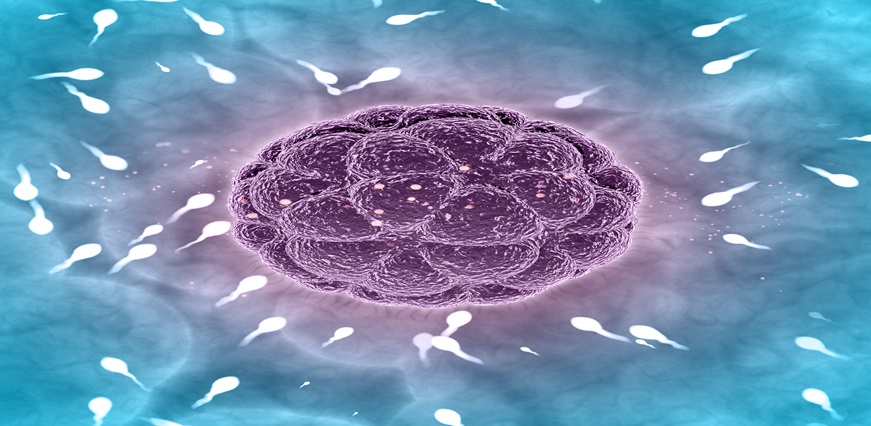The pituitary gland is a small gland located at the base of the brain. It controls the release of hormones by the other endocrine glands and also produces several important hormones that are needed to regulate various functions in the body, including prolactin. Prolactin is a hormone that can be found in male as well as female bodies, but it is mainly responsible for milk production in women after they give birth by stimulating the breast.
What is Prolactin?
Also known as lactotropin, prolactin is a hormone, which is responsible for development of mammary glands, lactation, and milk production. Apart from the pituitary gland, the hormone can also be produced by the immune system, central nervous system, and mammary glands. People assigned male at birth and non-lactating and non-pregnant people generally have low levels of this hormone in their blood, while high levels of prolactin are considered symptoms of a tumour called a prolactinoma. High prolactin levels are referred to as hyperprolactinemia, which can lead to several health issues, including infertility.
What Are Prolactinomas?
A prolactinoma is a tumour that forms when some of the prolactin-producing cells of the pituitary gland start multiplying more than required and form a growth or tumour. Prolactinomas are benign and those that are less than 1 centimetre in size are called micro-prolactinomas, while the larger ones are called macroprolactinomas. A prolactinoma is one of the most common causes of high prolactin production in the body. Prolactinomas are more common among women, especially between the ages of 25 and 34 years, but they also tend to be larger in men than in women. Small non-cancerous pituitary tumours or adenomas are very common among the general population (almost 40%), which makes it the most common type of tumour of the pituitary gland.
Symptoms of a High Prolactin Level and a Prolactinoma
One of the most common symptoms of a high prolactin level in the blood of a premenopausal woman is the decreased secretion of oestrogen, while in men, the symptoms of a high prolactin level in the blood are reduced production of testosterone and sperm.
On the other hand, the symptoms of a prolactinoma tumour are different. In fact, the symptoms of the tumour are also different for men, premenopausal women, and postmenopausal women, and they may also vary based on the location and size of the prolactinoma.
Symptoms in Premenopausal Women
- Irregular menstrual cycles.
- No menstrual periods.
- Reduced sex drive.
- Vaginal dryness.
- Pain during intercourse.
- Fertility issues.
- Unusual lactation or milk production from the breasts.
Due to the very noticeable symptoms, prolactinomas are easily discovered in women at an early stage, but they may also go unnoticed if one is taking hormone therapy, such as birth control pills.
Symptoms in Postmenopausal Women
Symptoms may not be noticed when the tumour is small, but as it grows and begins pressing against nearby tissues, the symptoms may include:
- Changes in vision.
- Loss of vision.
- Frequent headaches.
- Impaired peripheral vision.
- Pressure or pain in the sinus.
- Issues with the sense of smell.
- Nausea and vomiting.
Symptoms in Men
- Reduced sex drive.
- Low levels of testosterone.
- Erectile dysfunction.
- Milky discharge from the nipples.
- Enlarged breast tissues.
Symptoms in Children and Teenagers
- Delayed puberty.
- Irregular menstrual cycles in girls.
- No menstrual periods in girls.
- Hypogonadism.
- Milky discharge from the nipples, unrelated to nursing or pregnancy.
- Reduced growth.
- Vision problems.
- Frequent headaches.
What Causes Prolactinomas?
The exact cause of prolactinomas is unknown as it may vary from case to case. While prolactinomas mostly occur sporadically, in some cases, it has been observed that multiple endocrine neoplasia (MEN) type 1, an inherited condition, increases the risk of one developing prolactinomas.
Apart from prolactinomas, there are several other conditions that can be the cause of high prolactin levels in the body.
- Pregnancy or breastfeeding.
- Physical stress.
- Sexual intercourse.
- Exercising.
- Injury in the chest area.
- Eating a meal
- Nipple stimulation.
- Epileptic seizures.
- Medication that affects dopamine levels.
- Some other health conditions, such as thyroid, kidney disease, etc.
How Prolactinomas Are Diagnosed?
The following tests can be used to diagnose prolactinomas:
- Blood Tests: A prolactin blood test can be used to measure the level of the prolactin hormone in the blood. If the report shows higher than normal prolactin levels, a healthcare practitioner may prescribe an imaging test to detect any tumours.
- Imaging Tests: The magnetic resonance imaging (MRI) scan is the best way to detect the presence of a tumour in the body. However, people who cannot undergo an MRI scan, like people with metallic implants or with pacemakers, can undergo a computed tomography (CT) scan. The results of an imaging test allow doctors to locate prolactinomas and also measure their size. Once a prolactinoma diagnosis is confirmed, the doctor may prescribe further testing to check whether the prolactinoma is affecting other hormone levels, and depending on its size, may also suggest a vision test.
- Testosterone Level Blood Test: If someone who was assigned male at birth is experiencing symptoms that may indicate a prolactinoma, they may be asked to undergo a testosterone level blood test as low levels of testosterone can help doctors confirm a prolactinoma diagnosis.
Treatment and Management of Prolactinomas
For a prolactinoma that is causing high levels of prolactin, treatment generally includes medication, but the treatment plan may vary depending on the size of the tumour.
- Medication
The most commonly prescribed treatment plan for prolactinomas is with medicines that help control the levels of prolactin and shrink the tumour. These medicines are called dopamine agonists, and they mimic the effects of dopamine, a chemical produced by the brain.
- Surgery
For the treatment of a prolactinoma, surgery is rarely suggested, but may prove to be the most viable option for people who are unable to tolerate the medication or if they are already on antipsychotic medicines that will interact with the medication for prolactinoma treatment. It is an option for removing large-sized prolactinomas as well.
- Radiation Therapy
In cases where both, medication and surgery, fail to reduce the levels of prolactin, treatment using radiation therapy may be suggested. This treatment involves high-energy particle waves of X-rays to target and kill the tumour cells. Depending on the size of the tumour and where it is located, radiation therapy may include a single dose of radiation or multiple doses spread across several weeks.
Despite being benign tumours of the pituitary gland, if left untreated, prolactinomas can lead to several serious complications, which is why it is important to keep a check on one’s prolactin levels.













 7982100200
7982100200
























 To reach our help desk call 9213188888
To reach our help desk call 9213188888.png)
Comments